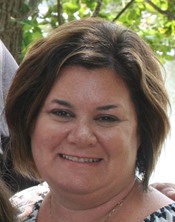Program Information
Regulatory Update
M Reiter1*, J Elee2*, D White3*, R Martin4*, (1) Capitol Associates, Inc., Washington, DC, (2) LA Dept of Environmental Qual, West Monroe, LA, (3) U.S. Nuclear Regulatory Commission, Rockville, MD, (4) AAPM, Alexandria, VA
Presentations
MO-C-BRA|B-0 (Monday, March 20, 2017) 2:00 PM - 4:00 PM Room: Ballroom A|B
Matt Reiter-What Does the New Legislative Year Look Like?
2017 has seen many historic changes in federal health policy and more is still to come. This session will provide an overview of the current environment for federal health policy in both the legislative and regulatory spaces. The presentation will feature an analysis of what has already happened in the way of health reform as well as what should be expected for the remainder of the year. In addition to a discussion of broader health reform topics, the presentation will discuss policy changes that will affect the clinical work of medical physicists ranging from clinical decision support mechanisms for advanced diagnostic imaging to promoting the efficacy of clinical radiation therapy services. Finally, the presentation will highlight federal efforts to increase funding and improve research for cancer through the Cancer Moonshot Initiative.
Jennifer Elee-Nuclear Medicine Inspections- What Problems Do We Find and Why?
Nuclear medicine inspections are conducted across the country by both NRC and Agreement State inspectors. The nuclear medicine inspection is a comprehensive look at the licensee’s program including, protocols, personnel, quality control, and equipment. Most licensees are inspected at least every three years. Today, there are more outpatient facilities than ever before. Some are affiliated with larger hospitals; however, many are independent. With more facilities, there are more personnel involved, different quality control methods utilized, more isotope deliveries, and more scans performed. These factors led to issues at the time of inspections. Additionally, in the past ten years, most nuclear medicine departments have moved to a paperless quality control tracking. This has changed the way nuclear medicine inspections are conducted, and has led to new issues with inspections. Finally, new scans and isotopes are being used in the field. This is an additional issue that must be addressed at inspections. The nuclear medicine inspection covers many of the same aspects of a program no matter what type of facility, record keeping or equipment is utilized. However, each inspection is unique and tailored to the facility. Many inspection issues that are found are similar regardless of the size or type of facility.
Duncan White-NRC Re-Evaluation of Category 3 Source Security and Accountability
The presentation will provide the status of the U.S. Nuclear Regulatory Commission’s (NRC) activities to re-evaluate Category 3 source security and accountability. In October 2016, the Commission directed staff to determine the necessity of revising NRC regulations and processes in light of the agency’s operating experience with high-risk sources, the results of the assessment of the security requirements in 10 CFR Part 37 as required by the Energy and Water Development and Related Agencies Appropriations Bills for Fiscal Year 2015, and NRC’s actions in response to the recommendations in the 2016 Government Accountability Office (GAO) audit report on the NRC and Agreement State materials licensing program. In 2009, NRC first implemented the National Source Tracking System (NSTS) for category 1 and 2 sources and later added Web-Based Licensing System (WBL) and the License Verification System to improve the overall control and management of radioactive sources in the United States. Staff recently completed a comprehensive program review and developed recommendations based on the first two years of Part 37 implementation of physical security requirements for NRC licensees. In response to a 2015 GAO investigation in which GAO obtained a radioactive material license for a Category 3 source using fictitious credentials, two NRC/Agreement State working groups recently completed their assessment of pre-licensing guidance and license verification and transfer of Category 3 sources that addressed GAO’s recommendations. The Category 3 source re-evaluation will leverage the operational experience and recommendations from these assessments to look at options to revise NRC regulations and processes governing source protection and accountability. Staff’s assessments and public input will form the basis of recommendations to the Commission in August 2017 that could impact over 5,000 licensees nationally.
Richard Martin-Are Radioactive Materials Secure?
Since September 11, 2001, questions have been raised concerning the safety and security of radioactive materials. There have been several draft bills introduced in Congress to mandate the use of alternative technologies and prohibit the use of category 1 and 2 radioactive sources. In this talk we will examine the status of this issue and the AAPM’s role in educating legislators and others on the safe and secure use of radioactive materials and the benefit from utilizing these sources in treatment cancer and providing quality patient care.
Contact Email:







